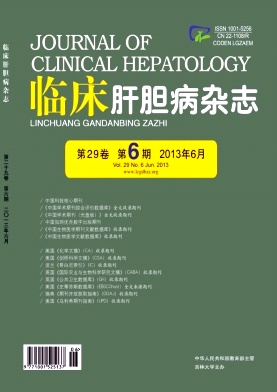|
[1] Intensive Medical Branch of China Medical Association.Guideline formanagement of acute lung injury/acute respiratory distress syndrome:an evidence-based update by the Chinese Society of Critical CareMedicine (2006) [J].Chin J Emerg Med, 2007, 16 (4) :343-349. (in Chinese) 中华医学会重症医学分会.急性肺损伤/急性呼吸窘迫综合征诊断和治疗指南 (2006) [J].中华急诊医学杂志, 2007, 16 (4) :343-349.
|
|
[2]Yang J, Lin F, Zhu X, et al.The influence of high positive end-expiratory pressure ventilation combined with low tidal volume onprognosis of patients with acute lung injurg/acut respiratory distresssyndrome:a meta-analysis[J].Chin Critical Care Med, 2011, 23 (1) :5-9. (in Chinese) 杨君, 刘飞, 朱曦, 等, 高呼气末正压通气结合小潮气量对急性肺损伤/急性呼吸窘迫综合征患者预后影响的荟萃分析[J].中国危重病急救医学, 2011, 23 (1) :5-9.
|
|
[3]Huang YZ, Chen YG, Peng GD, et al.Acute fatty liver of pregnancy:clinical analysis of 20 cases[J].J Pract Obstet Gynecol, 2010, 10 (26) :767-770. (in Chinese) 黄亚珍, 陈友国, 彭根大, 等.妊娠急性脂肪肝20例临床分析[J].实用妇产科杂志, 2010, 10 (26) :767-770.
|
|
[4]Ware LB.Pathophysiology of acute lung injury and the acute respir-atory distress syndrome[J].Semin Respir Crit Care Med, 2006, 27 (4) :337-349.
|
|
[5]Su X, Wang L, Song Y, et al.Inhibition of inflammatory responsesby ambroxol, a mucolytic agent, in a murine model of acute lung in-jury induced by lipopolysaeeharide[J].Intensive Care Med, 2004, 30 (1) :133-140.
|
|
[6]Plataki M, Hubmayr RD.The physical basis of ventilator inducedlung injury[J].Expert Rev Respir Med, 2010, 4 (3) :373-385.
|
|
[7]Ware LB, Bastarche JA, Wang L.Coagulation and fibrinolysis inhuman acute lung injury-new therapeutic targets?[J].Keio JMed, 2005, 54 (3) :142-149.
|
|
[8]Rocco PR, Dos Santos C, Pelosi P.Lung parenchyma remodeling inacute respiratory distress syndrome[J].Minerva Anestesiol, 2009, 75 (12) :730-740.
|
|
[9]Rival G, Patry C, Floret N.Prone position and recruitment maneu-ver:the combined effect improves oxygenation[J].Crit Care, 2011, 15 (3) :125.
|













 DownLoad:
DownLoad: